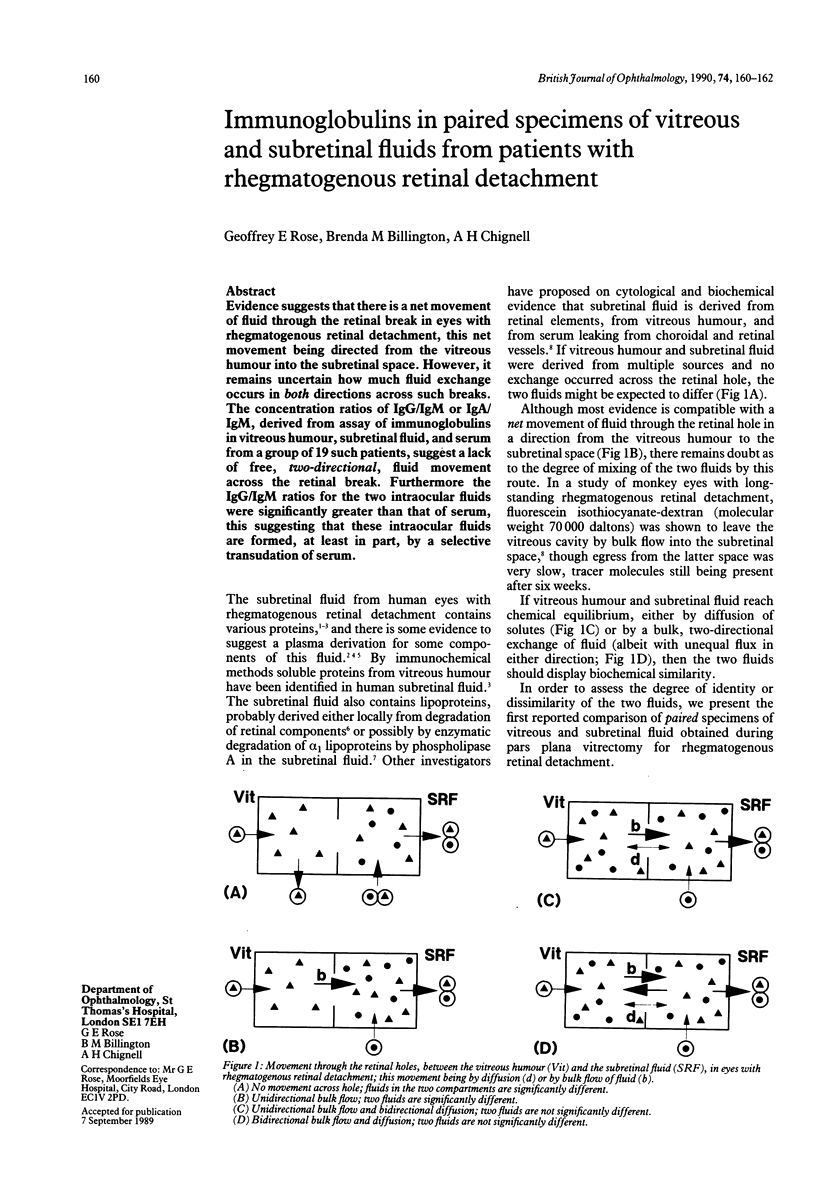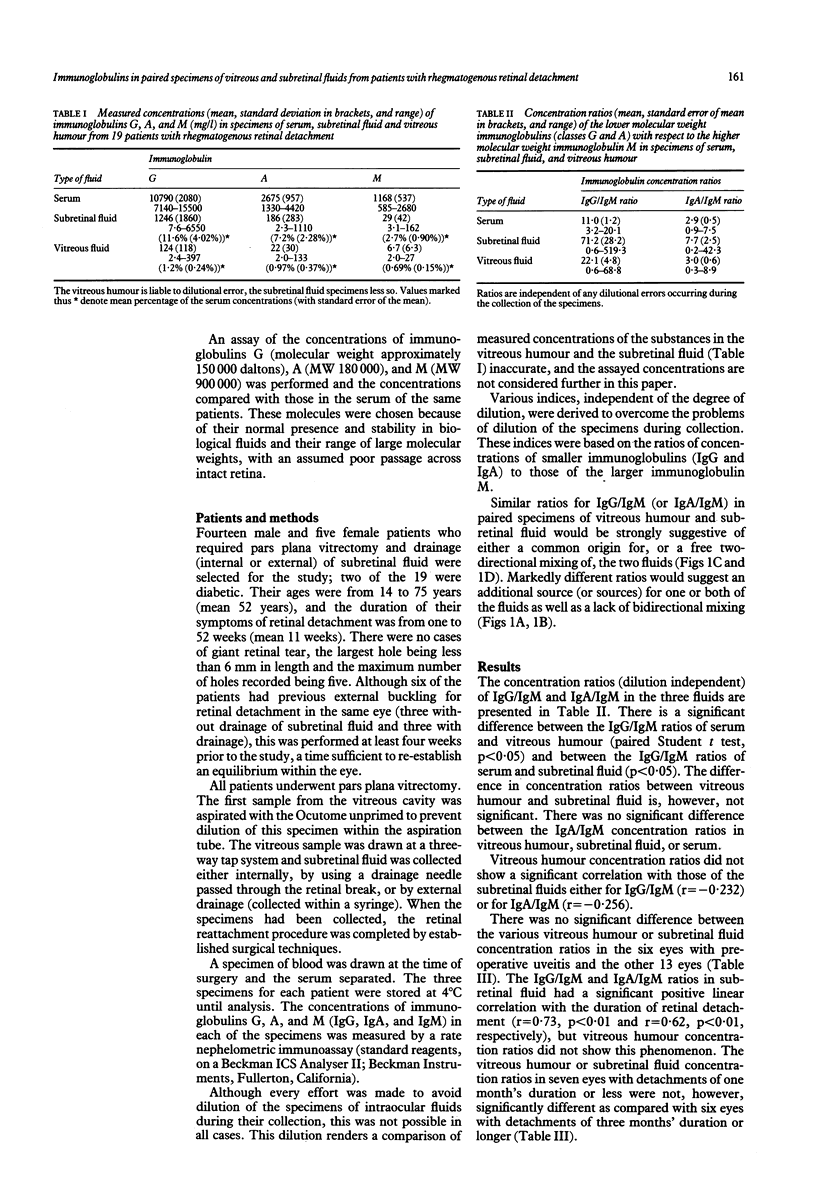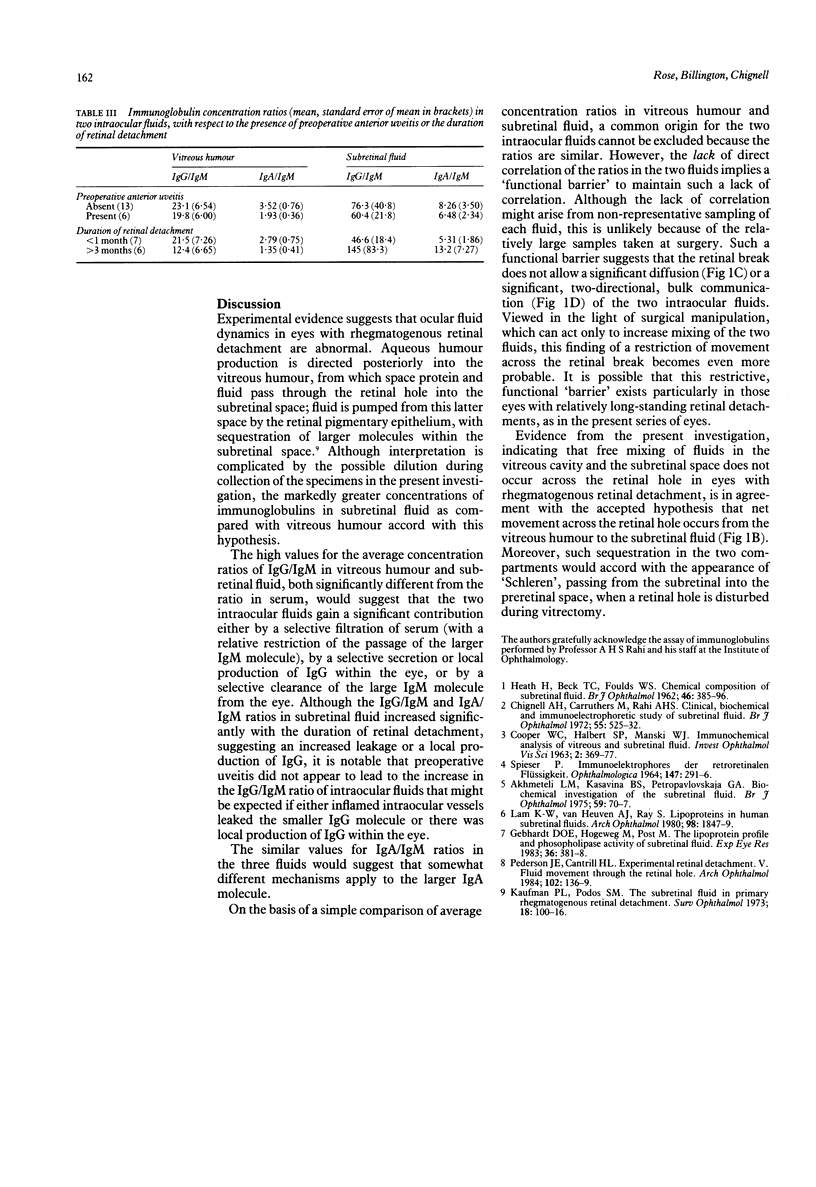Abstract
Evidence suggests that there is a net movement of fluid through the retinal break in eyes with rhegmatogenous retinal detachment, this net movement being directed from the vitreous humour into the subretinal space. However, it remains uncertain how much fluid exchange occurs in both directions across such breaks. The concentration ratios of IgG/IgM or IgA/IgM, derived from assay of immunoglobulins in vitreous humour, subretinal fluid, and serum from a group of 19 such patients, suggest a lack of free, two-directional, fluid movement across the retinal break. Furthermore the IgG/IgM ratios for the two intraocular fluids were significantly greater than that of serum, this suggesting that these intraocular fluids are formed, at least in part, by a selective transduction of serum.
Full text
PDF


Selected References
These references are in PubMed. This may not be the complete list of references from this article.
- Akhmeteli L. M., Kasavina B. S., Petropavlovsakaja G. A. Biochemical investigation of the subretinal fluid. Br J Ophthalmol. 1975 Feb;59(2):70–77. doi: 10.1136/bjo.59.2.70. [DOI] [PMC free article] [PubMed] [Google Scholar]
- COOPER W. C., HALBERT S. P., MANSKI W. J. IMMUNOCHEMICAL ANALYSIS OF VITREOUS AND SUBRETINAL FLUID. Invest Ophthalmol. 1963 Aug;2:369–377. [PubMed] [Google Scholar]
- Chignell A. H., Carruthers M., Rahi A. H. Clinical, biochemical, and immunoelectrophoretic study of subretinal fluid. Br J Ophthalmol. 1971 Aug;55(8):525–532. doi: 10.1136/bjo.55.8.525. [DOI] [PMC free article] [PubMed] [Google Scholar]
- Gebhardt D. O., Hogeweg M., Post M. The lipoprotein profile and phospholipase activity of subretinal fluid. Exp Eye Res. 1983 Mar;36(3):381–388. doi: 10.1016/0014-4835(83)90119-7. [DOI] [PubMed] [Google Scholar]
- Heath H., Beck T. C., Foulds W. S. CHEMICAL COMPOSITION OF SUBRETINAL FLUID. Br J Ophthalmol. 1962 Jul;46(7):385–396. doi: 10.1136/bjo.46.7.385. [DOI] [PMC free article] [PubMed] [Google Scholar]
- Lam K. W., van Heuven W. A., Ray G. S. Lipoproteins in human subretinal fluids. Arch Ophthalmol. 1980 Oct;98(10):1847–1849. doi: 10.1001/archopht.1980.01020040699021. [DOI] [PubMed] [Google Scholar]
- Pederson J. E., Cantrill H. L. Experimental retinal detachment. V. Fluid movement through the retinal hole. Arch Ophthalmol. 1984 Jan;102(1):136–139. doi: 10.1001/archopht.1984.01040030114048. [DOI] [PubMed] [Google Scholar]
- SPEISER P. IMMUNELEKTROPHORESE DER RETRORETINALEN FLUESSIGKEIT. Ophthalmologica. 1964;147:291–296. doi: 10.1159/000304604. [DOI] [PubMed] [Google Scholar]


